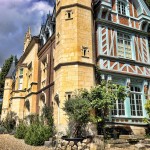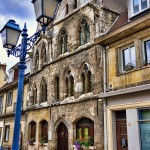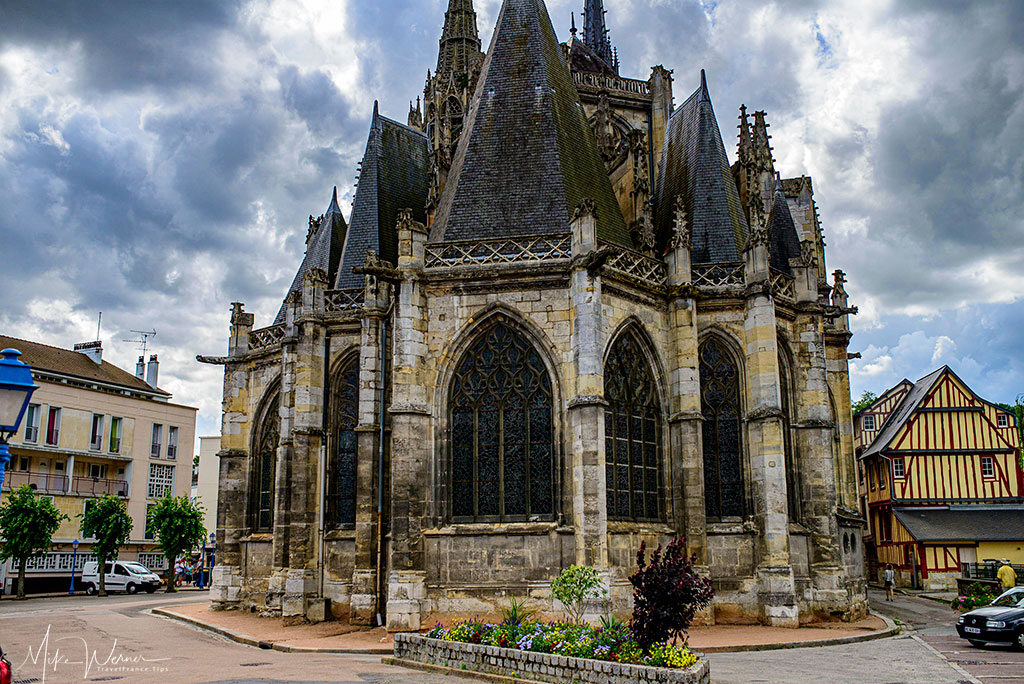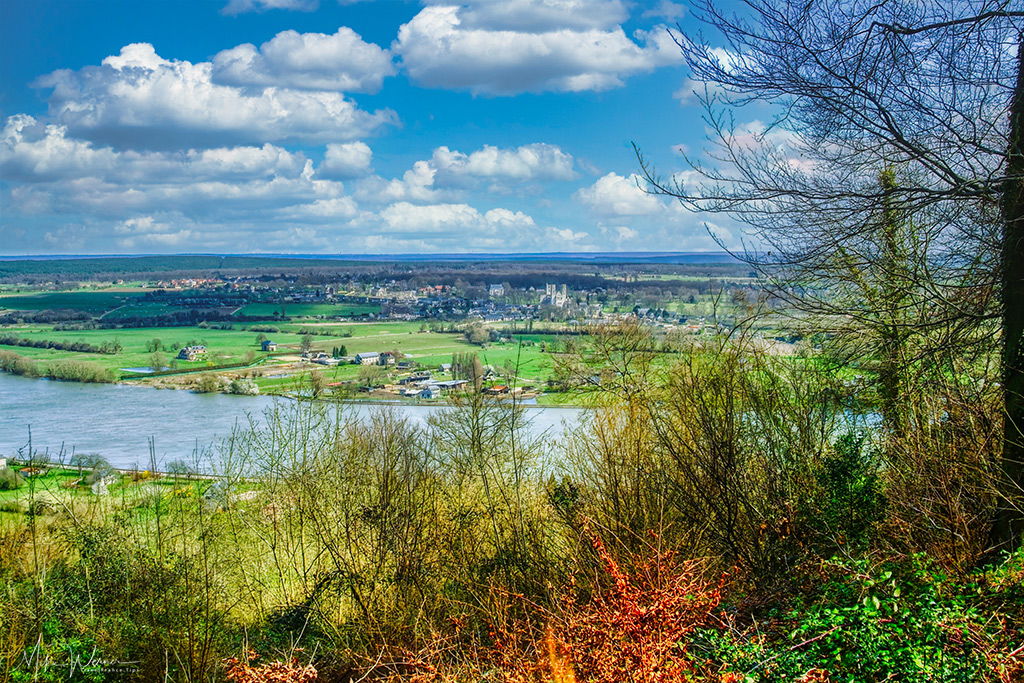This page forms part of a series of pages dedicated to the many artists who worked in Caudebec-en-Caux. A full list of all the artists with a link to their works can be found at the bottom of this page.
NOTE: Caudebec-en-Caux has recently merged (2016) with other towns nearby and is now called “Rives-en-Seine“. However, since the artists called the town by its original name in their paintings, we will continue to refer to the place by its old name.
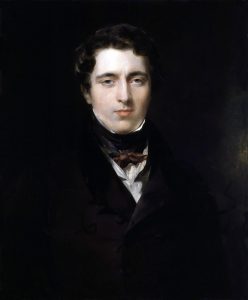
Movement(s): Romanticism
Richard Parkes Bonington (1802 – 1828) was an English Romantic landscape painter, who moved to France at the age of 14 and can also be considered as a French artist, and an intermediary bringing aspects of English style to France.
Richard Parkes Bonington was born in the town of Arnold, four miles from Nottingham. His father also known as Richard was successively a gaoler, a drawing master and lace-maker, and his mother a teacher. Bonington learned watercolour painting from his father and exhibited paintings at the Liverpool Academy at the age of eleven.
In 1817, Bonington’s family moved to Calais, France, where his father had set up a lace factory. At this time, Bonington started taking lessons from the painter François Louis Thomas Francia, who, having recently returned from England, where he had been deeply influenced by the work of Thomas Girtin, taught him the English watercolour technique.
In 1818, the Bonington family moved to Paris to open a lace shop. There he met and became friends with Eugene Delacroix. He worked for a time producing copies of Dutch and Flemish landscapes in the Louvre. In 1820, he started attending the Ecole des Beaux-Arts in Paris, where he studied under Antoine-Jean, Baron Gros.
In 1825 he met Delacroix on a visit with Alexandre-Marie Colin to London, and they sketched together there, and shared a studio for some months in Paris on their return; Delacroix influenced him in turning to historical painting.
He also developed a technique mixing watercolour with gouache and gum, achieving an effect close to oil painting. In 1826 he visited northern Italy, staying in Venice for a month, and London again in 1827–8.
In late 1828 his tuberculosis worsened and his parents sent him back to London for treatment. Bonington died of tuberculosis on 23 September 1828 at 29 Tottenham Street in London, aged 25.
He was buried in the graveyard of St James’s Chapel Pentonville and in 1837 his remains were translated to Kensal Green Cemetery to be re-interred with his parents.
Bonington had a number of close followers, such as Roqueplan and Isabey in France, and Thomas Shotter Boys, James Holland, William Callow and John Scarlett Davis in England. In addition, there were many copies and forgeries of his work made in the period immediately after his death.
Click here to read Bonington’s full bio on Wikipedia.
NOTE: Click on the image below for a bigger version (no new window will open).
NOTE: A black box like this one, means that there is an explanation text about today’s situation of the painting above it.
NOTE: Click on this photo icon ![]() anywhere below a painting to see a photo of what the area looks like today.
anywhere below a painting to see a photo of what the area looks like today.
NOTE: A blue box like this one, means there is an explanation or a note.
TODAY: The church which is still there (but badly shot up after WWII) is not a cathedral, however, King Henri IV did say that it was the most beautiful church in his kingdom.
Jumieges
The village of Jumieges (population: 1,800) is dominated by its abbey (in ruins), and it is located to the South/East of Caudebec-en-Caux and to the West of Rouen.
TODAY: The Jumieges Abbey is still there, and it’s still a ruin, but it is visitable?
Bonington painted mostly in many cities in France (a link “⇠” to his works in those cities will appear below when published):
- Auvergne-Rhone-Alpes
- Hauts-de-France
- Boulogne
- Calais
- Dunkerque
- Normandy
- Caudebec-en-Caux (and surrounding): ⇠
- Jumieges ⇠
- Le Havre (and surroundings): ⇠
- Harfleur ⇠
- Quillebeuf ⇠
- Le Treport
- Mont St Michel
- Rouen
- Trouville-sur-Mer ⇠
- Caudebec-en-Caux (and surrounding): ⇠
Artists featured here who painted in Caudebec-en-Caux (but not limited to) are (names marked with a “*” indicates that the artist did NOT work directly in Caudebec, instead worked in villages nearby):
- 🇫🇷 Binet, George ⇠
- 🇺🇸 Boggs, Frank Myers ⇠
- 🇬🇧 Bonington, Richard Parkes ⇠
- 🇫🇷 Boudan, Louis ⇠
- 🇫🇷 Boudin, Eugene-Louis ⇠
- 🇬🇧 Boys, Thomas Shotter * ⇠
- 🇬🇧 Burgess Jr, John * ⇠
- 🇬🇧 Callow, William ⇠
- 🇬🇧 Cameron, David Young ⇠
- 🇬🇧 Childers, Milly ⇠
- 🇫🇷 Corot, Jean-Baptiste Camille * ⇠
- 🇬🇧 Cundall, Charles ⇠
- 🇦🇺 Davies, David ⇠
- 🇬🇧 Dolby, Edwin ⇠
- 🇫🇷 Dufy, Raoul ⇠
- 🇫🇷 Garneray, Ambroise Louis ⇠
- 🇫🇷 Gernez, Paul-Elie ⇠
- 🇫🇷 Gudin, Theodore ⇠
- 🇫🇷 Lemaitre, Leon-Jules ⇠
- 🇫🇷 Letellier, Emile-Andre ⇠
- 🇬🇧 Prout, Samuel * ⇠
- 🇬🇧 Schafer, Henry Thomas ⇠
- 🇬🇧 Smallwood, William Frome * ⇠
- 🇬🇧 Talbot, Rosamund Constance ⇠
- 🇫🇷 Thorigny, Felix * ⇠
- 🇬🇧 Turner, Joseph Mallord William ⇠
NOTE: You can subscribe to our new articles by entering your email address in the box on the right column (or at the very bottom of this article) and clicking on the button “Subscribe”.
You will need to check your incoming emails and validate your subscription. If you can’t see an email from us, check your Spam folder. Without validating your email address, you will not get notifications from us. WE WILL NEVER GIVE YOUR EMAIL ADDRESSES TO ANYONE!
Related Posts
- 10000
- 10000
- 10000
- 10000
- 92
 Joseph Mallord William Turner, known contemporarily as William Turner, was an English Romantic painter, printmaker and watercolourist. He is known for his expressive colourisations, imaginative landscapes and turbulent, often violent marine paintings. He spent a lot of time painting in Normandy, and made quite a few paintings of Caudebec-en-Caux and…
Joseph Mallord William Turner, known contemporarily as William Turner, was an English Romantic painter, printmaker and watercolourist. He is known for his expressive colourisations, imaginative landscapes and turbulent, often violent marine paintings. He spent a lot of time painting in Normandy, and made quite a few paintings of Caudebec-en-Caux and…




